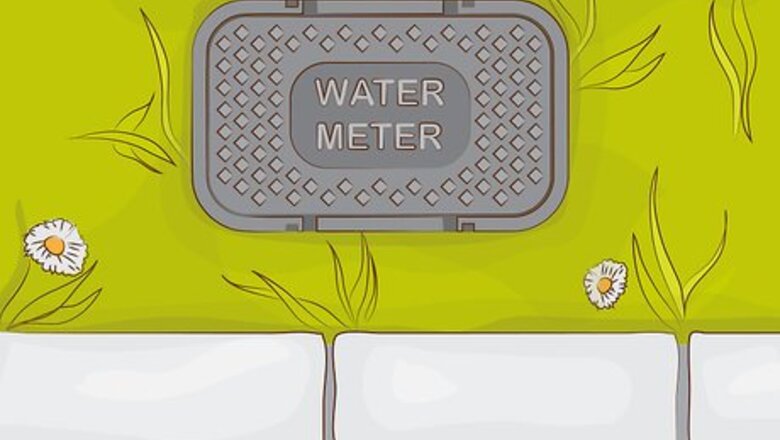
views
Accessing Your Water Meter
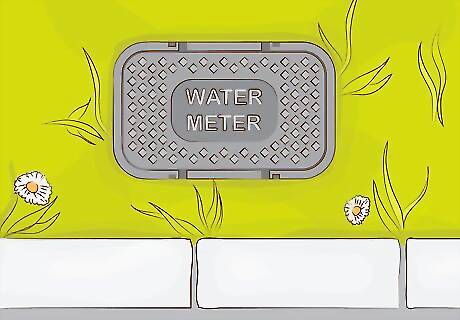
Locate your water meter. Residential water meters can ordinarily be found at the front of the property near the curb or street. They are most often housed in concrete boxes underground with heavy steel covers that are bolted shut and labelled “Water” for ease of identification. In an apartment or condominium, the water meters will likely be located in a utility room in the basement or at ground level. They might also be located directly on the building’s exterior. If your water bill is included in the cost of your rent or homeowner's association dues, the usage for your entire building will be read from a single meter. Make sure to check with the provider first to find out if it is okay for you to access the meter.
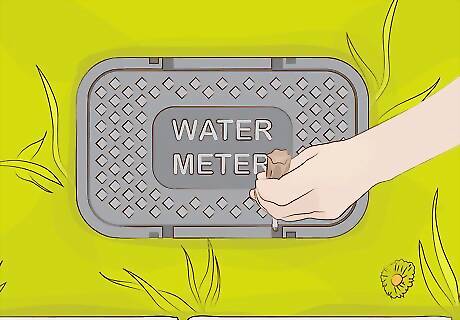
Remove the cover of the meter box. Insert a screwdriver or similar tool into one of the small holes in the cover and pry it up carefully. Set the cover aside somewhere nearby. If your meter box has a hinged cover, simply pull back the lid. Never attempt to open your meter box by hand. Snakes, rodents, insects and other dangerous animals have been known to nest inside water meter boxes. Go ahead and wipe the underside of the cover clean of dust, dirt and cobwebs while you have it off.

Check whether your property has analog or digital meters. An analog meter will appear as a large circular dial that may have one or more moving hands. Newer digital meters feature glowing readouts similar to an alarm clock and don’t require any complicated calculations to read. An analog water meter may be covered with a protective cap you will need to lift in order to see the meter's display. Some digital meters are light activated and won’t show your water usage until you shine a flashlight on them. Keep in mind that you will be held liable for any repairs or assessments if the meter is damaged. EXPERT TIP David Balkan David Balkan Professional Plumber & CEO of Balkan Sewer & Water Main David Balkan is a Professional Plumber, CEO of Balkan Sewer and Water Main Service, and President of Balkan Sewer and Drain Cleaning. As a hands-on owner of these companies for over 40 years, David is knowledgeable about water service lines, sewers, and drain line issues. David is a Committee Chairman of the Master Plumbers Council and has sat on the Executive Committee of the Sub Surface Plumbers Association of New York for over 30 years. His knowledge and solution-oriented approach contributed to Balkan Sewer and Water Main Service being the largest and most trusted service in New York City and the recipient of the 2017 Angie’s List Super Service Award. David Balkan David Balkan Professional Plumber & CEO of Balkan Sewer & Water Main Check your water meter regularly to prevent leaks. Check the water meter in your home from time to time with everything off to catch hidden leaks. If you catch any leaks, supply lines under the floors may be leaking. Also, listen closely for any hissing noises which, could indicate flowing water you can't see.
Taking an Accurate Reading
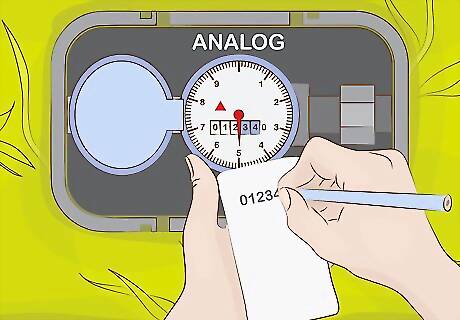
Write down the number on the display. Jot down the reading exactly as it appears. You can refer back to this number later when tabbing out your daily, weekly, or monthly usage. If you’re interested in tracking your water usage, consider keeping a utilities journal and taking readings at regular intervals as well as checking the monthly statements that your water purveyor provides. A record of past readings can also come in handy for detecting potential leaks.
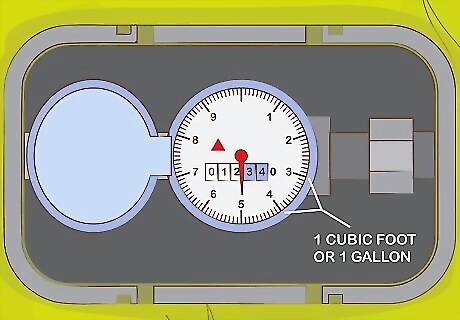
Note the position of the dial on an analog meter. There are nine digits around the face of an analog display, depending on the meter each number represents one cubic foot or one gallon of water. For every cubic foot or gallon that runs through your home, the long sweep hand will move from one number to the next. Once the hand makes a full revolution around the dial, on this meter, that’s 10 gallons (37.9 L) used.
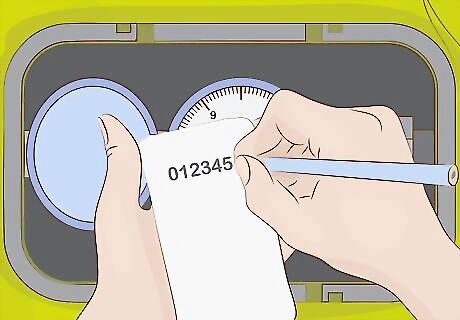
Fill in the last digit of the readout. The last digit on the display is a painted on “static zero,” which means it always appears as a zero. It's a placeholder. Its value becomes the number the sweep hand is pointing to. You enter this as part of your reading. To ensure that you’re getting an accurate reading be sure to include it. For instance, if the display reads “012340” and the sweep hand is on the “5,” then the meter is actually at 12,345 cubic feet or cubic gallons. Round down when the sweep hand rests between numbers. For more precision, note the small tick mark that the sweep hand is pointing to - on this meter these will be tenths of a cubic foot or cubic gallon. So, the reading from above becomes 12,345.0. But if the sweep hand was pointing to the second tick mark the reading would be 12,345.2.
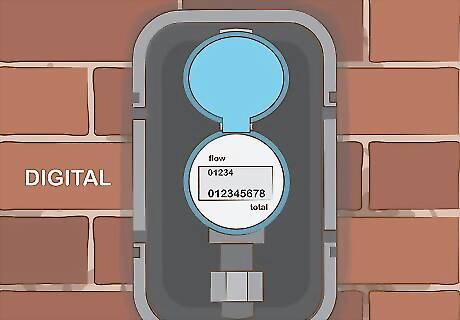
Record the usage and flow rate straight from a digital meter. If your property is outfitted with a digital display, you’re in luck—they’re much easier to make sense of. The row of numbers at the bottom shows the total amount of water registered by the meter. The smaller readout in the corner is the rate of flow, or the amount of water that passes through your home per minute. Your digital meter may go back and forth between showing the usage and flow rate, or the two readings may be separated into different sections of the display.
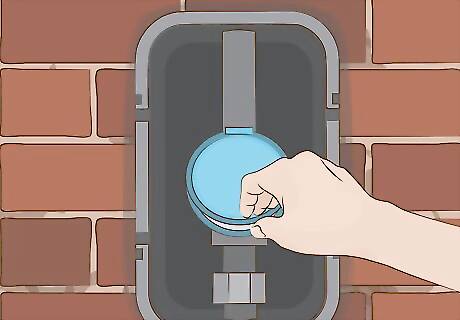
Replace the meter cap. Don't forget to fit the protective cap back over the dial before you close up the water meter box. This will help prevent possible damage and keep it clean so it can be easily read in the future.
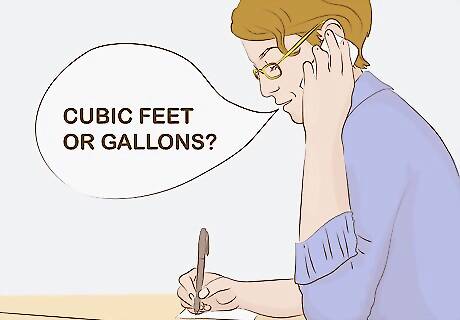
Learn how to interpret your readings. Not all municipalities measure water usage the same way. For example, charges may vary during times of year when water usage is more frequent, such as in the summer when people tend to wash their cars outside. To find out how your meter is read, and therefore how your bill is structured, contact your local provider. Once you have an understanding of how the billing system works, you can begin keeping track of your monthly consumption yourself. Water usage is most commonly measured in either cubic feet or gallons. One cubic foot may correspond to anywhere from 1–8 gallons (3.8–30 L), depending on how the utilities codes are written where you live.
Monitoring Your Water Usage

Take monthly readings. To be able to accurately gauge how much water is running through your home, you'll need to check your water meter every thirty days. That way, you'll have something to compare the previous month's report to. Reviewing your readings over the course of several months will help you spot patterns in your usage, which can be helpful if you're taking steps to conserve water. The more frequently you check your water meter, the more likely you are to catch leaks before they get serious.

Determine how much water your household uses. Since you know that your water usage is billed in units of 100 cubic feet, you can drop the last two digits of the readout (12,345 becomes 123). This number can then be subtracted from the next month’s reading. Let’s say that at that time the meter reads 13,545 (or 135)—that means you’ll be charged for 1,200 (or 12) units. Water charges reflect the number of units used per month. Each unit is typically around 100 cubic feet, or somewhere in the neighborhood of 700 or 800 gallons (3,000 or 3,000 L). If there’s any uncertainty about how usage is measured in your area, simply subtract last month’s reading from this month’s and review the utility codes for your area to see how it’s broken down.

Calculate the cost of your water usage. Your next task is to find out how much your water provider charges per unit of water consumed. This can be accomplished by calling your utilities board. Once you know this number, multiply it by your usage for the month to get an idea of how much you can expect to pay. If you have an old bill on hand, you can work in reverse by dividing the amount charged by the number of units you used that month to arrive at the average cost per unit.
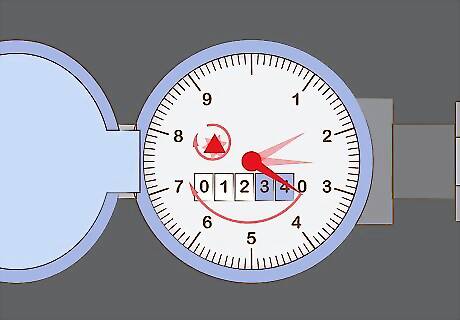
Check for leaks. Sometimes you’ll receive a bill that seems unusually high. In this case, it’s possible that you have a leak. To get to the bottom of things, shut off all toilets, faucets and shower heads in your residence. Also, if you have an underground sprinkler system, then make sure to check all of its components for leaks. Then, check the meter again. If the sweep hand is moving, it means that water is escaping somewhere on the property. Another way to identify a potential leak is by watching the flow indicator. Most water meters have a small symbol (usually a triangle, star or gear) somewhere on the display. The flow indicator will spin when a leak is detected. You can also use a stethoscope to listen for leaks, which often sound like a humming or hissing noise. Have leaks repaired right away. When left unaddressed, even a minor leak can become a major expense.
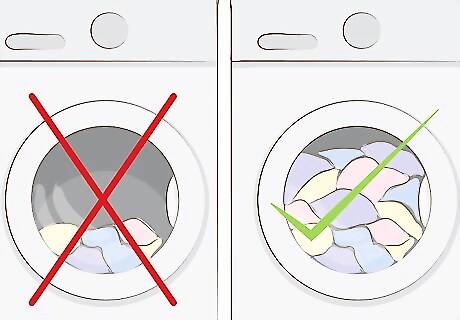
Look for ways to decrease your water usage. If you’re surprised to discover that you’re using more water than you thought, don’t worry. There are a number of ways you can cut down on your usage, such as consolidating your laundry into larger loads, shutting off the water when you are brushing your teeth, reducing your use of water to maintain your lawn, or taking shorter showers. Remember: every little bit adds up. Keep you and your family's habits in mind when coming up with ideas for how to lower your water bill.

















Comments
0 comment